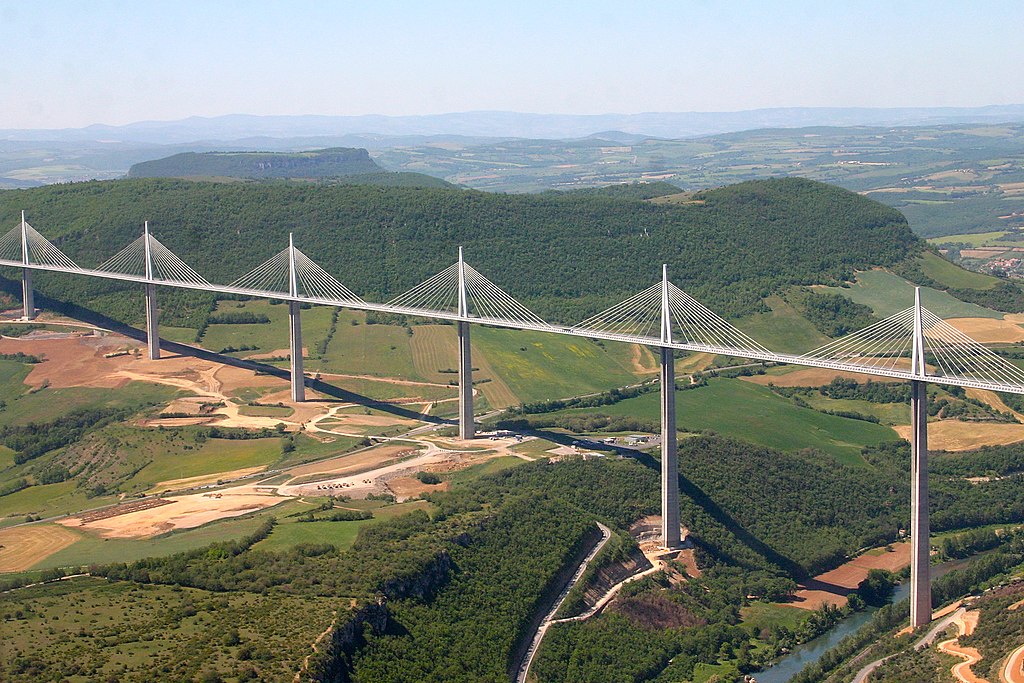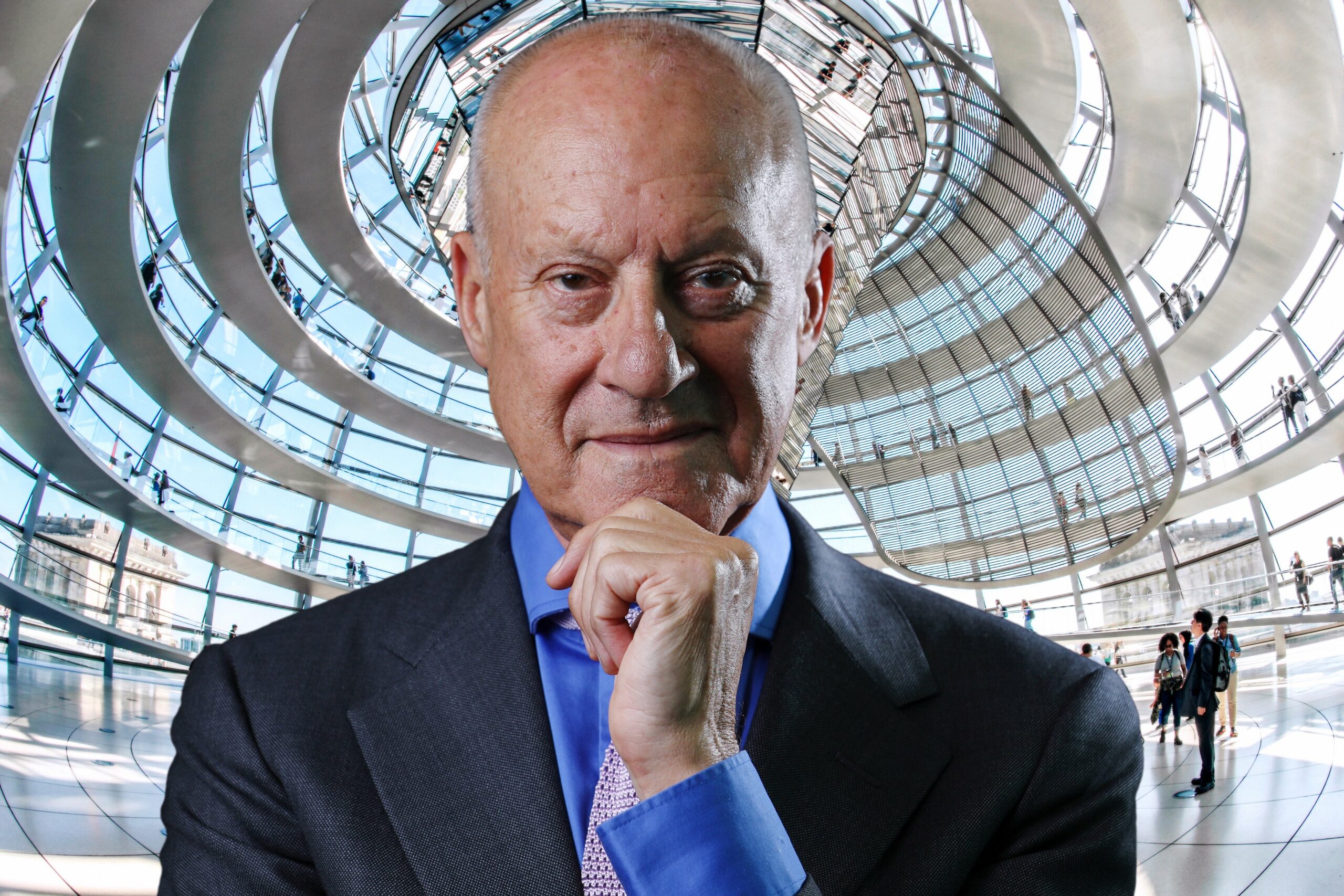Introduction
Sir Norman Foster is one of the most influential architects of the modern era. Known for his innovative designs, sustainability-conscious structures, and ability to blend technology with aesthetic appeal, Foster has left an indelible mark on cities around the world. From the iconic Gherkin in London to the Millau Viaduct in France, his work redefines urban landscapes and pushes the boundaries of architecture. This article explores his life, career, notable projects, and impact on modern architecture.

Millau Viaduc Valley
Early Life and Education
Born on June 1, 1935, in Reddish, Stockport, England, Norman Foster grew up in humble circumstances. His early interest in design and architecture was inspired by the industrial landscape of Manchester, a city known for its rich engineering and manufacturing history.
Foster attended Burnage Grammar School but left at the age of 16 to work in the Manchester City Treasurer’s office. However, his passion for design led him to study at the Manchester School of Architecture and City Planning while working to support himself. His academic prowess won him the Henry Fellowship to Yale University, where he earned a Master’s degree in Architecture. At Yale, he studied under the tutelage of renowned architect Paul Rudolph, further shaping his modernist ideals and innovative design approach.
Career and the Founding of Foster + Partners
After graduating from Yale in 1961, Foster worked briefly in the United States before returning to the UK. In 1963, he co-founded Team 4 alongside Richard Rogers, Su Brumwell, and Wendy Cheesman, pioneering a high-tech architectural movement. Their work, particularly on the Reliance Controls Factory, showcased a futuristic approach to design that would define Foster’s career.
In 1967, he founded Foster Associates, later known as Foster + Partners, which became one of the most prestigious architectural firms in the world. His firm’s designs are characterized by a focus on sustainability, high-tech elements, and an elegant blend of form and function.
Notable Architectural Works
Foster’s architectural legacy spans numerous continents and industries, from corporate headquarters and airports to cultural landmarks and bridges. Below are some of his most notable projects:
1. The Gherkin (30 St Mary Axe) – London, UK
One of the most recognizable buildings in London, the Gherkin, completed in 2004, revolutionized skyscraper design. The bullet-shaped, energy-efficient structure utilizes a diagrid system to minimize steel use, while its innovative ventilation reduces energy consumption. It stands as an enduring symbol of contemporary British architecture.
2. Millau Viaduct – France
Completed in 2004, the Millau Viaduct in France is the tallest bridge in the world, with pylons reaching 343 meters (1,125 feet) above the Tarn River. This stunning structure, co-designed with engineer Michel Virlogeux, is an engineering marvel, blending seamlessly with the natural landscape and reducing traffic congestion.
3. HSBC Headquarters – Hong Kong
Foster’s HSBC Headquarters, completed in 1985, was one of the most expensive buildings of its time and introduced modular construction techniques. It features an open, column-free interior and maximizes natural light with an atrium that harnesses sunlight, reducing artificial lighting costs.
4. Apple Park – Cupertino, USA
Designed for Apple Inc. and opened in 2017, Apple Park in Cupertino, California, is a futuristic, spaceship-like headquarters covering 175 acres. The circular building, made entirely of glass, is powered by renewable energy and features one of the largest rooftop solar installations in the world.
5. Reichstag Dome – Berlin, Germany
Foster played a crucial role in restoring the Reichstag, the German Parliament building, after reunification. Completed in 1999, its glass dome symbolizes transparency in government, allowing the public to view parliamentary proceedings below while harnessing natural light for energy efficiency.
Architectural Philosophy and Style
Foster is often associated with the High-Tech Architectural Movement, which emphasizes advanced engineering, industrial aesthetics, and sustainable design. His key architectural principles include:
- Sustainability: Many of his designs incorporate green technologies, natural ventilation, and energy efficiency.
- Transparency and Light: Foster uses glass extensively to bring in natural light and promote openness.
- Integration with the Environment: His structures often complement their surroundings rather than dominate them.
- Innovative Materials: His projects employ cutting-edge materials and construction techniques, such as lightweight steel and carbon fiber composites.
Awards and Recognition
Foster’s contribution to architecture has been recognized with numerous awards and honors, including:
- Pritzker Architecture Prize (1999) – Often referred to as the Nobel Prize of architecture.
- Stirling Prize (1998, 2004, 2010, 2018) – Awarded by the Royal Institute of British Architects (RIBA).
- Knighted in 1990 and later made a Life Peer as Lord Foster of Thames Bank in 1999.
- Royal Gold Medal for Architecture (1983) by RIBA.
- AIA Gold Medal (1994) by the American Institute of Architects.
Foster’s Legacy and Influence on Modern Architecture
Foster’s impact extends beyond individual buildings; he has helped shape contemporary architectural philosophy. His work emphasizes the harmonization of technology and nature, demonstrating how modern architecture can be both innovative and environmentally responsible.
Foster also plays a significant role in architectural education. His firm actively collaborates with young architects, offering mentorship and opportunities to contribute to major projects. Additionally, the Norman Foster Foundation, established in 2017, supports research and initiatives in architecture, design, and urban planning.
Future Projects and Ongoing Work
Even in his late 80s, Foster continues to be involved in ambitious architectural projects. Some of his upcoming and recent projects include:
- Lunar Habitats for NASA and ESA – Exploring architecture for space exploration.
- Droneports in Africa – Sustainable infrastructure for medical supply delivery in remote regions.
- New Airports and Transport Hubs – Designs focusing on reducing carbon footprints and improving efficiency.
Conclusion
Sir Norman Foster has revolutionized modern architecture with his visionary designs and commitment to sustainability. His projects, ranging from the futuristic Apple Park to the awe-inspiring Millau Viaduct, demonstrate a deep understanding of both engineering and aesthetics. Through his relentless pursuit of innovation and environmentally responsible architecture, Foster has not only shaped the skylines of major cities but also influenced generations of architects to come. His legacy continues to grow, solidifying his status as one of the greatest architects of our time.

